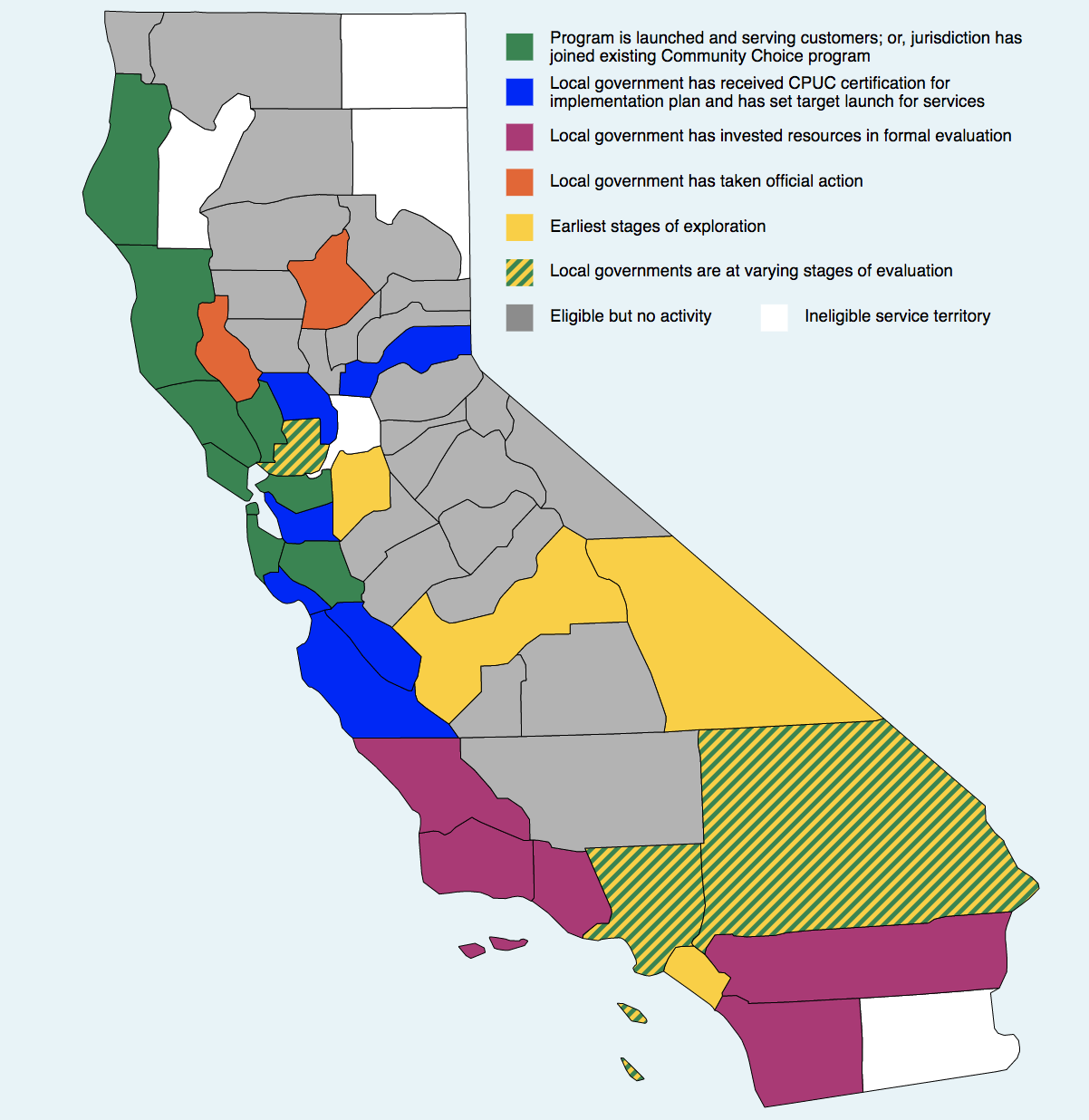By Luis Amezcua
 As 2017 comes to a close, the Bay Area has positioned itself as a leader in the clean energy economy as many of its residents and businesses opt into a Community Choice program that delivers cleaner energy than the incumbent utility.
As 2017 comes to a close, the Bay Area has positioned itself as a leader in the clean energy economy as many of its residents and businesses opt into a Community Choice program that delivers cleaner energy than the incumbent utility.
What is Community Choice?
Community Choice energy (also known as Community Choice Aggregation, or CCA), is a game-changing alternative to the investor-owned utility, enabling cities and counties to pool electricity customers to form a local power agency. This means that communities can decide to get their electricity from clean, renewable sources — either by purchasing it on the market, or by developing local resources.
By relying on clean, locally generated electricity, we can speed our transition away from fossil fuels that threaten our climate. We can also cut pollution and foster dependable, efficient, and resilient energy economies. And because CCA programs are locally owned and managed, ratepayer funds are reinvested locally.
Since MCE (formerly Marin Clean Energy) became California’s first CCA program in 2010, the model has spread far beyond Marin County. Here are updates on CCA programs in three Bay Area counties:
CleanPowerSF continues to exceed expectations
As of October, San Francisco’s CCA, CleanPowerSF, is evaluating power contracts to prepare itself for the next phase of enrollment in 2018. Currently, CleanPowerSF only serves 15% of the city, but will jump to 35% in May 2018, and will continue to provide two options: a 35% renewable default option, and a 100% renewable "opt-up" option for just a few more dollars per month.
So far, the program continues to exceed expectations. The San Francisco Public Utilities Commission reported that only 3.2% of potential enrollees have chosen to stay with Pacific Gas & Electric, and 3.8% have opted up to the 100% clean energy option. Additionally, the program is aiming to be 100% greenhouse gas free by 2030 (70% renewable energy and 30% hydroelectric sources).
As CleanPowerSF sifts through its power contracts for its next phases of enrollment, the Sierra Club is monitoring the power contracts to ensure that the renewable energy is procured from within California, and that there are no bids from proposed projects that have not gone through environmental review and may be detrimental to the environment.
San Francisco residents and businesses will be enrolled in CleanPowerSF in phases, neighborhood by neighborhood — but you don’t have to wait! Pre-enroll at www.cleanpowersf.org today and you’ll be part of the next wave of CleanPowerSF customers.
Alameda County CCA begins to take shape
With a launch date of Spring 2018, the East Bay Community Energy Authority (EBCE) has been busy the last couple of months appointing its Community Advisory Committee, hiring staff, including its Chief Executive Officer, and finalizing its Implementation Plan as required by California law.
After months of consideration, EBCE, at its meeting on November 1st, awarded its data-management, billing, and call-center services contract to the Sacramento Municipal Utility District (SMUD), rejecting proposals from Calpine and GridX. Additionally, EBCE will work with SMUD to set up its own in-house local call center in two years to begin creating local jobs.
In the next few weeks, EBCE will consider awarding a contract for power services, and will begin reviewing draft results of the Local Development Business Plan for public feedback.
Among the many issues the Sierra Club is interested in, the Local Development Business Plan is a major priority that will lay out a roadmap for fostering local benefits and developing and integrating local renewable energy resources in the long and short term.
Contra Costa County and its cities prepare for MCE service
In summer of this year, Concord, Danville, Martinez, Moraga, Oakley, Pinole, Pittsburg, San Ramon, and unincorporated Contra Costa County all voted to join MCE, and will begin to receive cleaner energy in Spring 2018.
The Sierra Club is working with MCE to promote the program in the new member communities, and work toward fostering community benefits, like local jobs and renewable energy development.
Photo: Community Choice Energy progress in California. Source: Clean Power Exchange